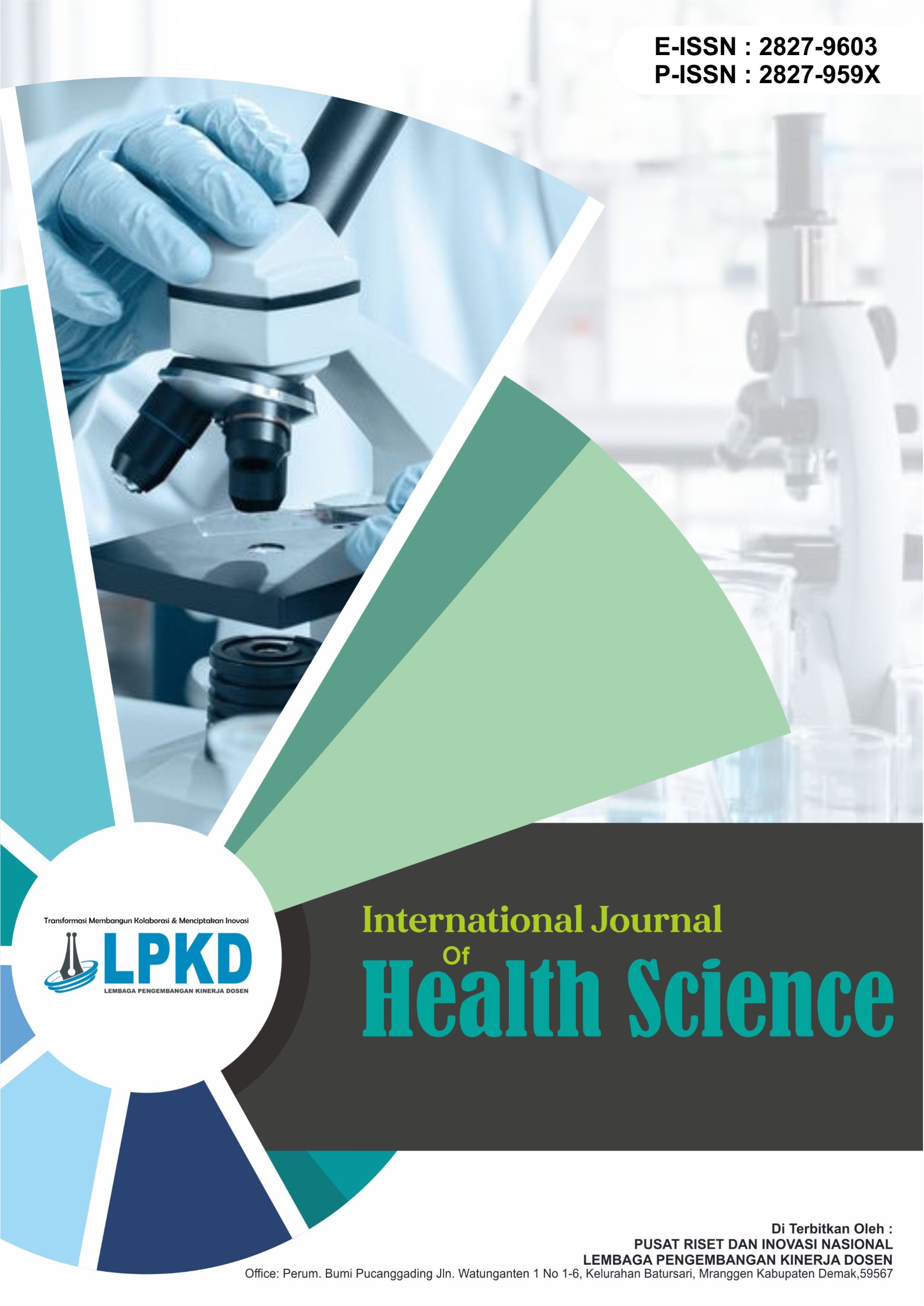Anthropometric Index for Predicting Abnormalities of Biomedical Examination in Indonesian Urban Areas
DOI:
https://doi.org/10.55606/ijhs.v5i1.5002Keywords:
BMI, cardiovascular disease, cut-off point, obesity, waist circumferenceAbstract
Obesity is a problem in various parts of the world where its prevalence is increasing rapidly, both in developed and developing countries. It is estimated that there are 1.5 billion people in the world experiencing being overweight and obese. Obesity can occur because there is an imbalance between the energy from the incoming food greater than the energy used by the body. This study is aimed to determine the best anthropometric index to predict abnormalities in biomedical examination (inflammation and lipid profile) in adulthood in urban areas of Indonesia. The study was a cross-sectional study. The data were taken from Health Research (Riskesdas). The population in this study were those age 20-59 years both sexes. The analysis conducted in this study are univariate, bivariate, ROC analysis, and logistic regression analysis. The results indicate that in general obesity and central obesity increases with age, with the highest prevalence was in the 40-59 year age. In adults, cut-off point value based on BMI and waist circumference to predict cardiovascular disease risk in Indonesian society is lower than the WHO recommendation.
Downloads
References
V. Torres-Carot, A. Suárez-González, and C. Lobato-Foulques, “The energy balance hypothesis of obesity: do the laws of thermodynamics explain excessive adiposity?,” Eur. J. Clin. Nutr., vol. 76, no. 10, pp. 1374–1379, 2022.
Y. C. Chooi, C. Ding, and F. Magkos, “The epidemiology of obesity,” Metabolism, vol. 92, pp. 6–10, 2019.
NHS England, “Health Survey for England, 2022 Part 2,” 2024. [Online]. Available: https://digital.nhs.uk/data-and-information/publications/statistical/health-survey-for-england/2022-part-2/adult-overweight-and-obesity?utm_source=chatgpt.com#summary
D. O’Reilly and N. C. D. R. F. Collaboration, “Worldwide trends in body-mass index, underweight, overweight, and obesity from 1975 to 2016: a pooled analysis of 2416 population-based measurement studies in 128· 9 million children, adolescents, and adults,” Lancet, vol. 390, no. 10113, p. 2627, 2017.
Kementerian Kesehatan RI, “Survei Kesehatan Indonesia (SKI),” 2023.
Kementerian Kesehatan RI, “Buku saku pemantauan status gizi,” Buku saku pemantauan status gizi tahun 2017, pp. 7–11, 2018.
E. Verdú, J. Homs, and P. Boadas-Vaello, “Physiological changes and pathological pain associated with sedentary lifestyle-induced body systems fat accumulation and their modulation by physical exercise,” Int. J. Environ. Res. Public Health, vol. 18, no. 24, p. 13333, 2021.
T. V Rohm, D. T. Meier, J. M. Olefsky, and M. Y. Donath, “Inflammation in obesity, diabetes, and related disorders,” Immunity, vol. 55, no. 1, pp. 31–55, 2022.
R. Huxley, S. Mendis, E. Zheleznyakov, S. Reddy, and J. Chan, “Body mass index, waist circumference and waist: hip ratio as predictors of cardiovascular risk—a review of the literature,” Eur. J. Clin. Nutr., vol. 64, no. 1, pp. 16–22, 2010.
L. G. H. Goh, S. S. Dhaliwal, T. A. Welborn, A. H. Lee, and P. R. Della, “Ethnicity and the association between anthropometric indices of obesity and cardiovascular risk in women: a cross-sectional study,” BMJ Open, vol. 4, no. 5, p. e004702, 2014.
S. Haldar, S. C. Chia, and C. J. Henry, “Body composition in Asians and Caucasians: comparative analyses and influences on cardiometabolic outcomes,” Adv. Food Nutr. Res., vol. 75, pp. 97–154, 2015.
K. Khoramipour et al., “Adiponectin: structure, physiological functions, role in diseases, and effects of nutrition,” Nutrients, vol. 13, no. 4, p. 1180, 2021.
X. Bi, Y. T. Loo, S. Ponnalagu, and C. J. Henry, “Obesity is an independent determinant of elevated C-reactive protein in healthy women but not men,” Biomarkers, vol. 24, no. 1, pp. 64–69, 2019.
J. Yu et al., “Optimal cut-off of obesity indices to predict cardiovascular disease risk factors and metabolic syndrome among adults in Northeast China,” BMC Public Health, vol. 16, pp. 1–7, 2016.
K. C. Cheong et al., “Optimal waist circumference cut-off values for predicting cardiovascular risk factors in a multi-ethnic Malaysian population,” Obes. Res. Clin. Pract., vol. 8, no. 2, pp. e154–e162, 2014.
F. Hadaegh, A. Zabetian, P. Sarbakhsh, D. Khalili, W. P. T. James, and F. Azizi, “Appropriate cutoff values of anthropometric variables to predict cardiovascular outcomes: 7.6 years follow-up in an Iranian population,” Int. J. Obes., vol. 33, no. 12, pp. 1437–1445, 2009.
M. Deurenberg-Yap and P. Deurenberg, “Is a re-evaluation of WHO body mass index cut-off values needed? The case of Asians in Singapore,” Nutr. Rev., vol. 61, no. suppl_5, pp. S80–S87, 2003.
A. D. Shah et al., “Less favorable body composition and adipokines in South Asians compared with other US ethnic groups: results from the MASALA and MESA studies,” Int. J. Obes., vol. 40, no. 4, pp. 639–645, 2016.
Downloads
Published
How to Cite
Issue
Section
License
Copyright (c) 2025 International Journal Of Health Science

This work is licensed under a Creative Commons Attribution-ShareAlike 4.0 International License.







